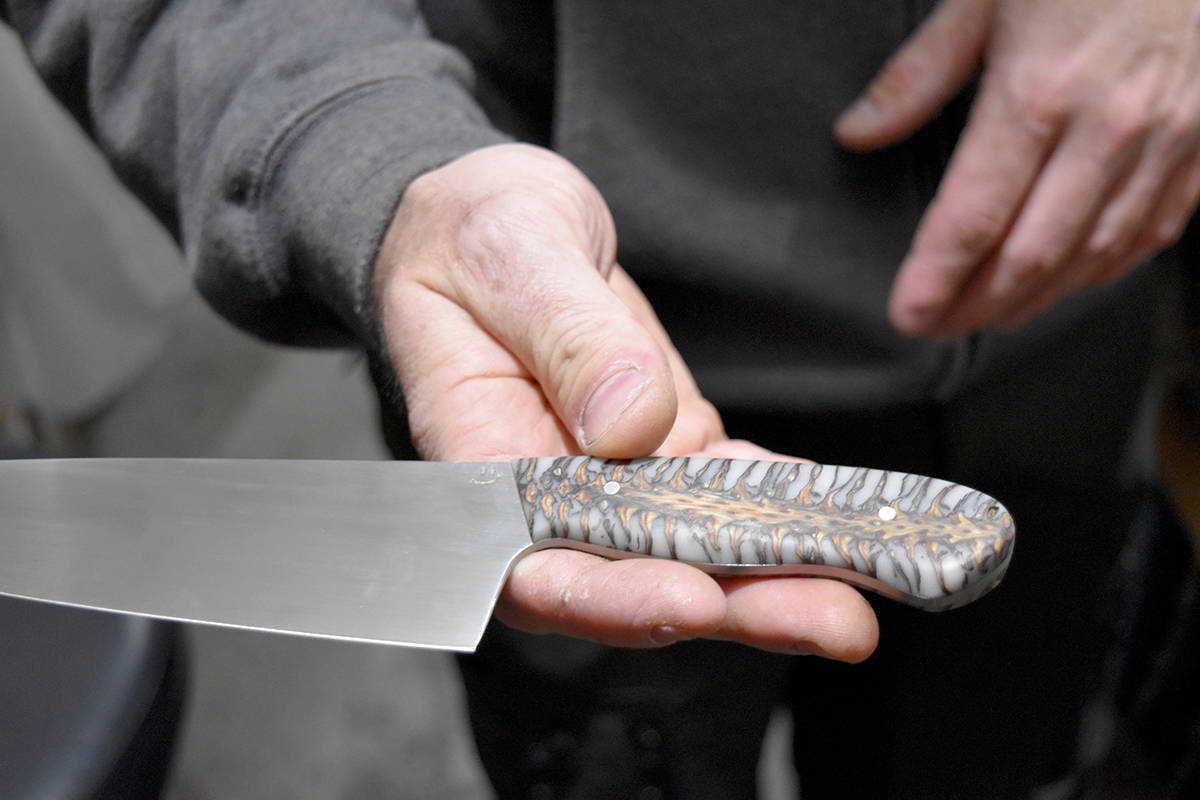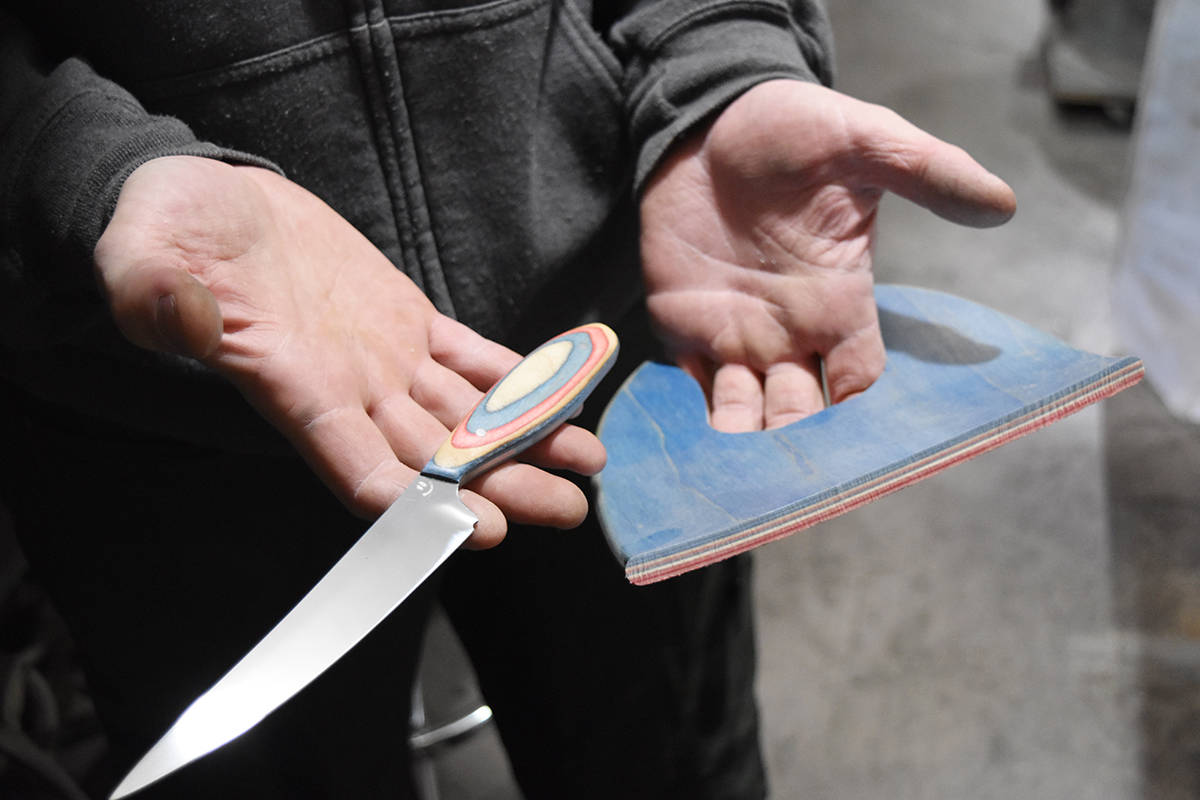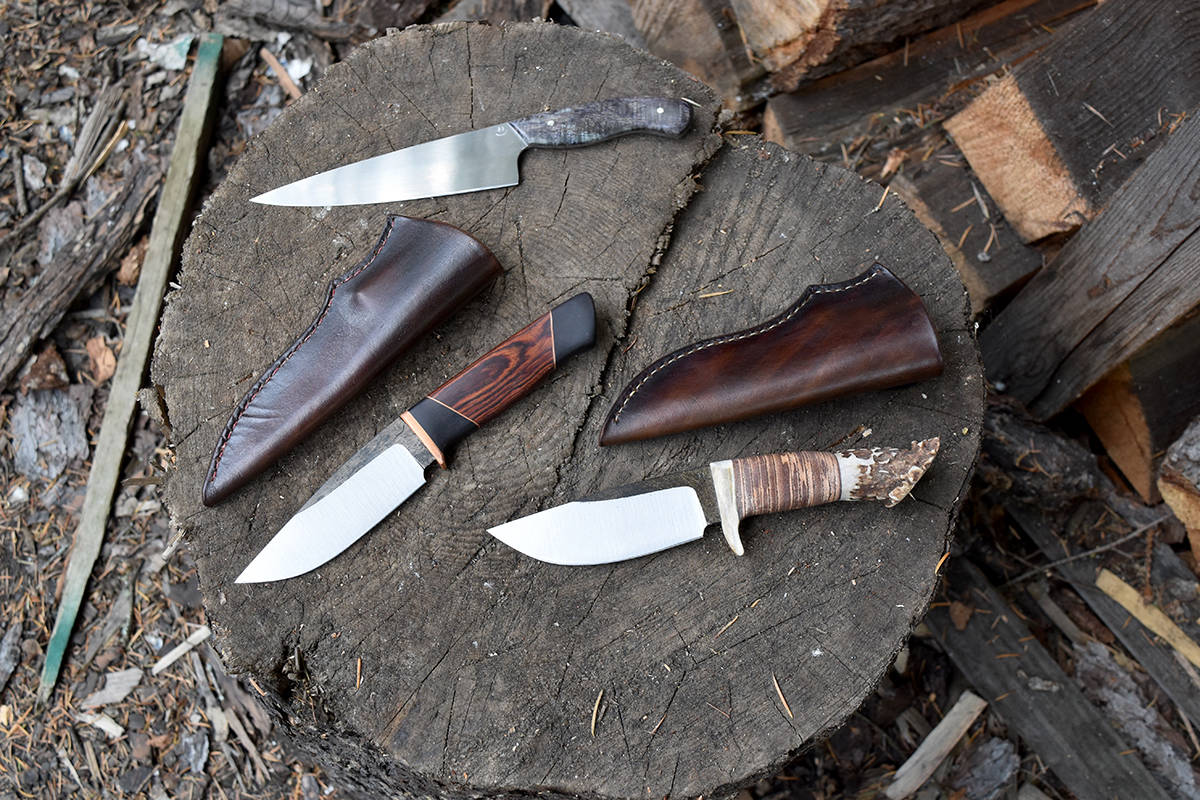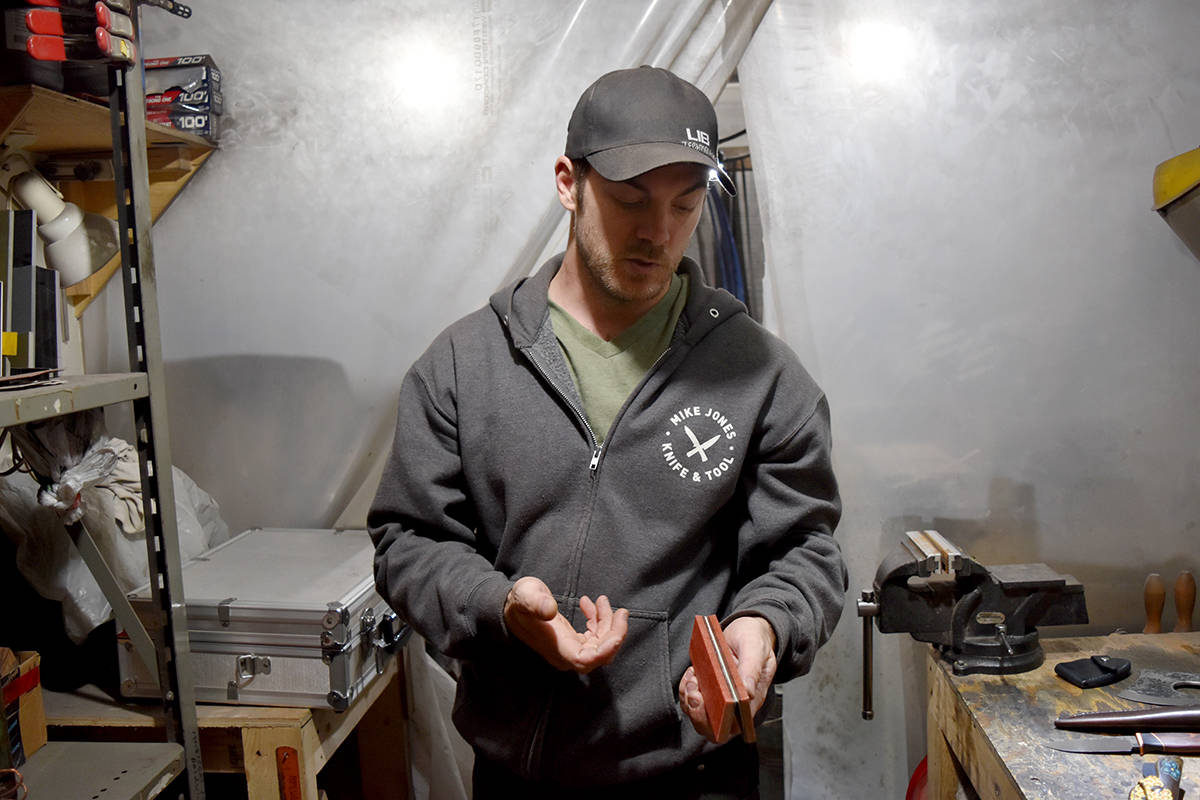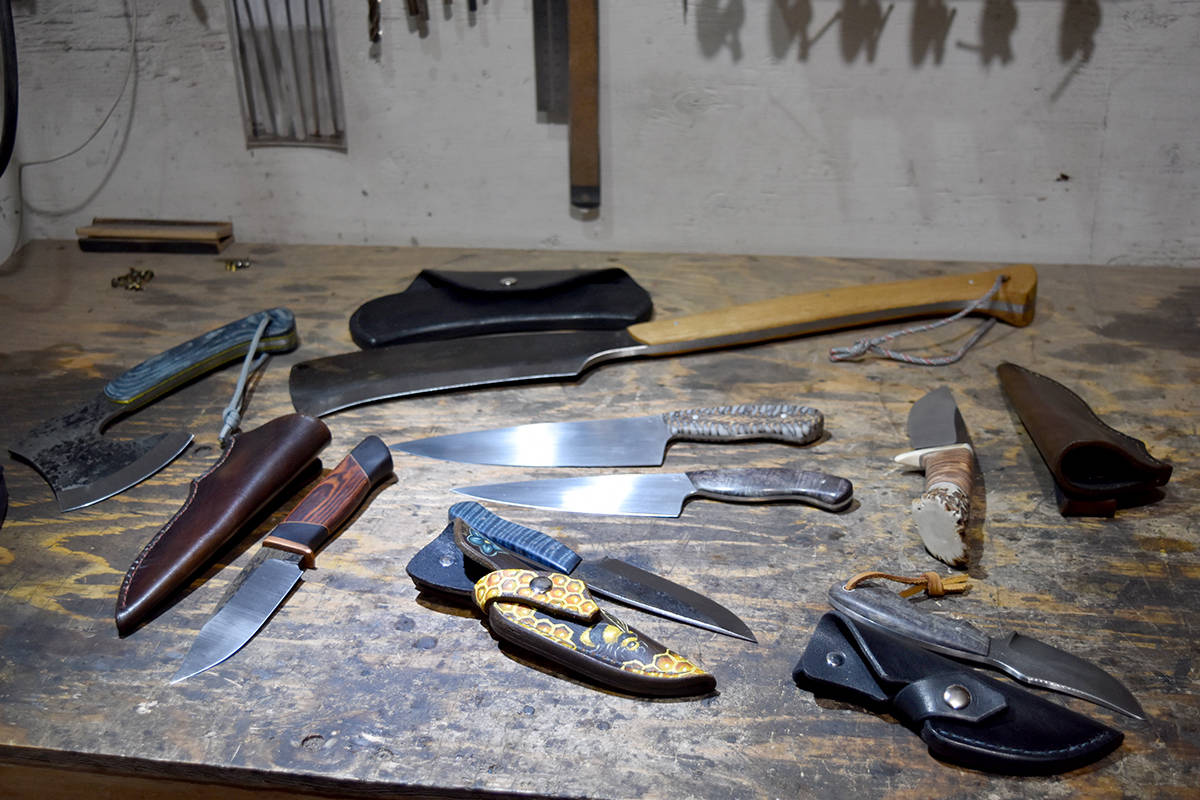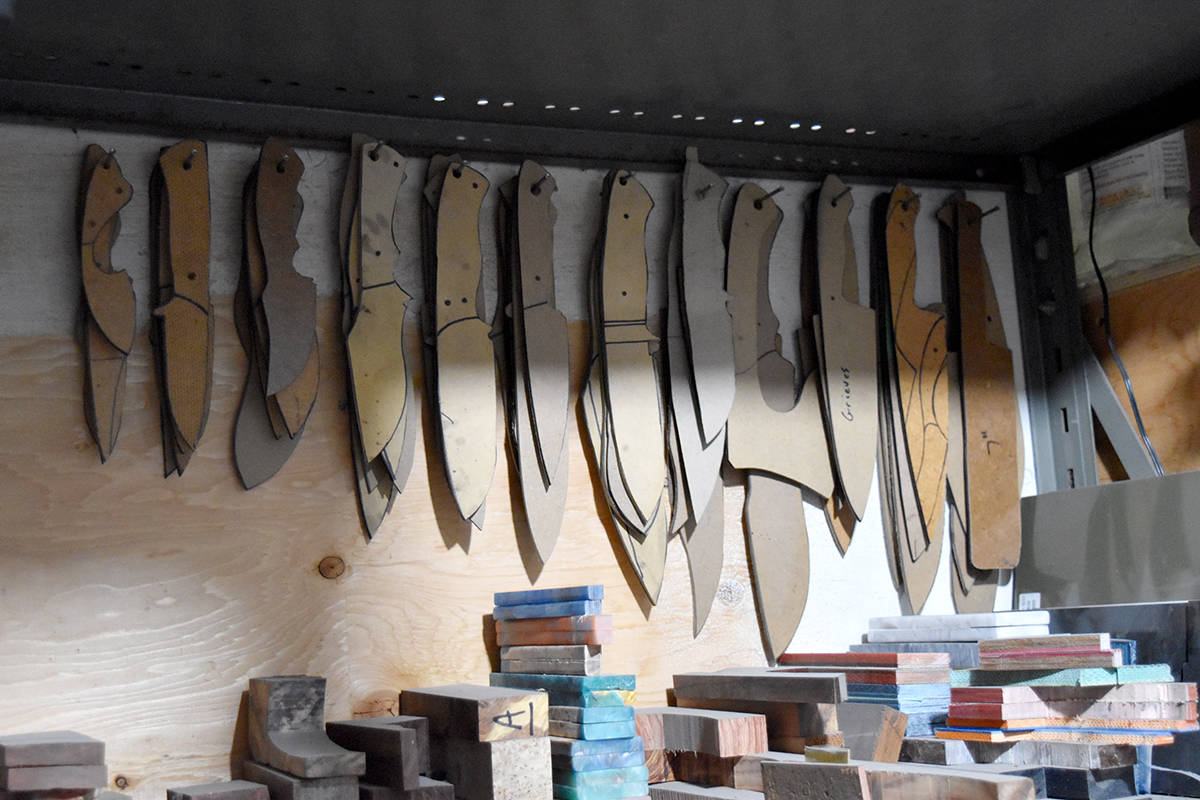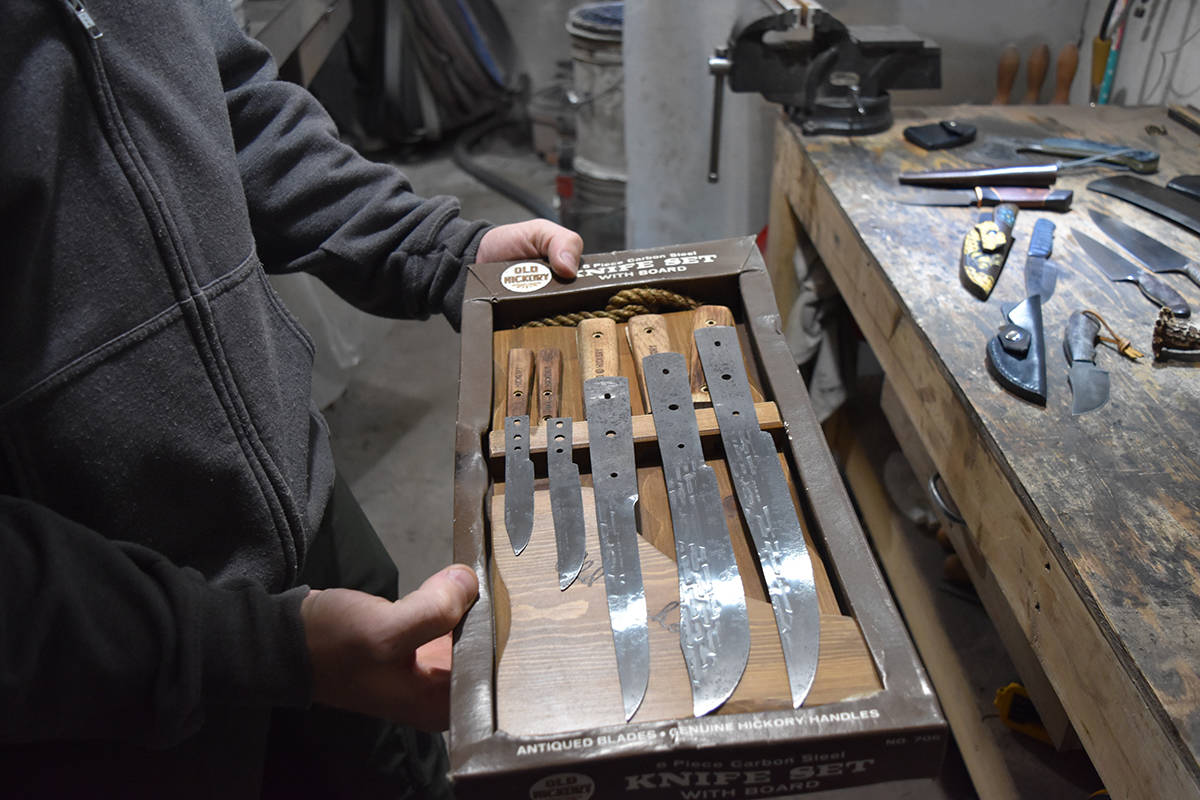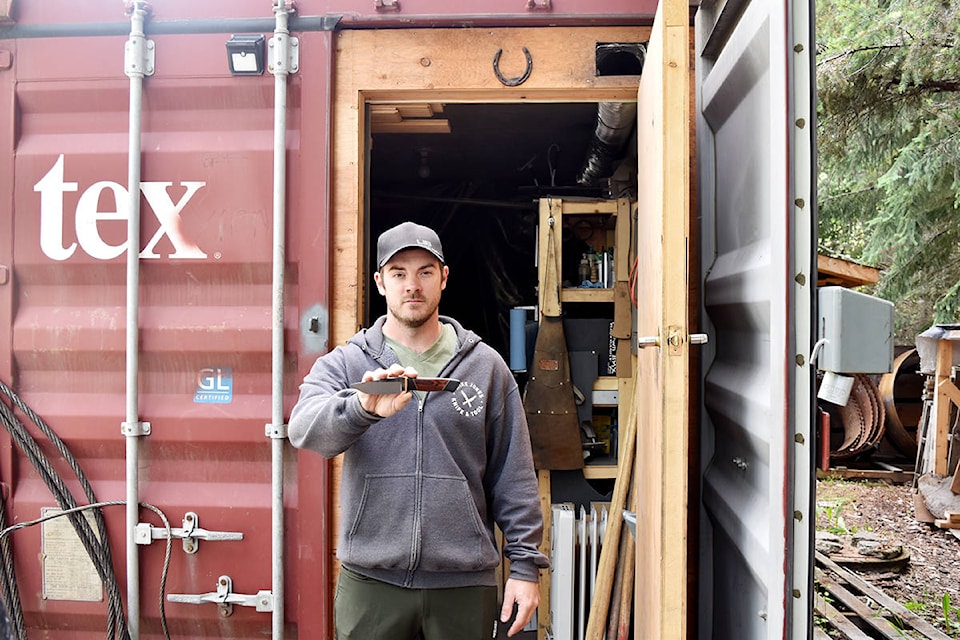Mike Jones made his first knife six years ago, after he and a friend bought knives at a two-for-one booth at a Vancouver night market and his friend decided to disassemble his own knife in favour of building it a new handle.
It wasn’t something Jones had thought of before.
“When I got home, I jumped on YouTube to see how to do that,” says Jones.
All the videos that popped up were tutorials on building a knife from scratch, and he says they didn’t look too difficult, so he decided to give it a try.
“I made a really horrible knife, but it worked — like, it was an actual knife.”
Over the following six years, Jones created more and more knives, often for friends. He learned the craft through YouTube tutorials and trial and error. “A lot of error,” Jones adds with a laugh.
He began selling his knives and showing them at craft shows, eventually leaving his job to take up the craft full-time two years ago. Now, the Quesnel local has shipped his knives around the world to people in South America, Australia, Europe and all over North America. The 35-year-old knife maker also has more than 17,000 followers on Instagram, where he frequently shares photos of his unique creations.
But the decision to leave his job and pursue his passion full-time was not an easy one. “If you’re having trouble getting too much sleep, I recommend quitting your job as the single breadwinner of your family and taking on a hobby that you do in your shed full-time for your family,” he says. “That will solve your sleeping problem right away.”
Jones was working for 150 Mile Timber Framing, making the commute from Quesnel to 150 Mile House every day. Between work and his commute, he says it was a struggle to see his young son at all while he was working.
He hurt his back in the spring of 2017 and had to take a month off from work. Near the end of that month, Jones was set to have a booth for his knives in a Prince George craft show.
Ultimately, he decided to use the month to see how many knives he could make if he worked on them full-time and prepare for the show. By the end of the month, the money he could sell the knives for amounted to more than he would make in a month at his regular job.
He became a full-time knife maker in June, 2017.
“I’m really motivated by productivity, so being able to produce something you can hold in your hand — it was perfect. It’s a great outlet for creativity.”
Jones built his workshop in a shipping container. He wanted something that could follow him if he moved, but still fit on his property so he could work from home and spend more time with his family. The shipping container is small and dark, and the shelves are full of antlers, pieces of various types of wood, and even old skateboards — which Jones converts into handles for some of his knives.
On another shelf are rectangles of different coloured materials, materials which have been compressed using resin so they harden into something that can be used in a handle. Some of his knives even have handles made of denim — though you wouldn’t know it if you touched them.
One of those bars of material was made of a boxer’s old, red hand-wrap, and Jones holds it up when he talks about it, explaining that virtually any material can be used to customize the handle of a knife.
Much of the materials he uses are recycled, from old, often rusted saw blades to reclaimed lumber and everything in between.
The handles aren’t the only way Jones gets creative with his knives.
One method of making blades is called Damascus. Using two different types of steel — one of them with nickel — you heat the metals until they are hot enough to be hammered together, which is called forge welding. Jones say you weld a stack of the different metals together, alternating the different types of steel. From there, you manipulate the metal by cutting it, folding it and hammering it, which you repeat several times.
It’s the same method, Jones explains, that was used to create Samurai swords.
When you’re done, you dip the blade in an acid bath. The nickel resists, while the other steel darkens, creating a dual-colour blade.
Jones makes various types of hunting knives, including deer knives and fillet knives, pack axes, and kitchen knives, including chef, prep, vegetable splitting and paring knives. He also makes leather sheaths and covers for the knives out of his home. He marks all of his blade with a small smiley face near the hilt, his own personal brand.
His favourite knives are the more creative ones, the ones he wasn’t sure he would be able to bring to life — but he says the ones he’s most proud of are the ones he made for charity.
Fight for the Forgotten is a charity which provides farmland and wells to the Mbuti Pygmy tribe in the Ituri Rainforest of the Congo. The charity was founded by former MMA fighter Justin Wren, and Jones has donated to it twice over the last year.
“I did a run of knives where I just sent all the money from them straight to that foundation,” says Jones. “The response from that, from my following [on social media], was enormous. I just came up with it on a Wednesday afternoon, and I posted a video, and within an hour, all 42 of the knives that I had to sell were spoken for. It was awesome. So I’ve done that twice.”
Wren ended up sending Jones a personal video from the site of one of the wells the charity was building. “So that was really cool. It’s just super rewarding. The motivation that I felt the whole time I was working on those … it’s really weird. It’s intangible, but you just don’t stop doing it because you think it’s really cool what you’re able to do just from building knives — getting clean water for people across the world.”
PHOTOS: Students perform The Great Campfire at Red Bluff Elementary
